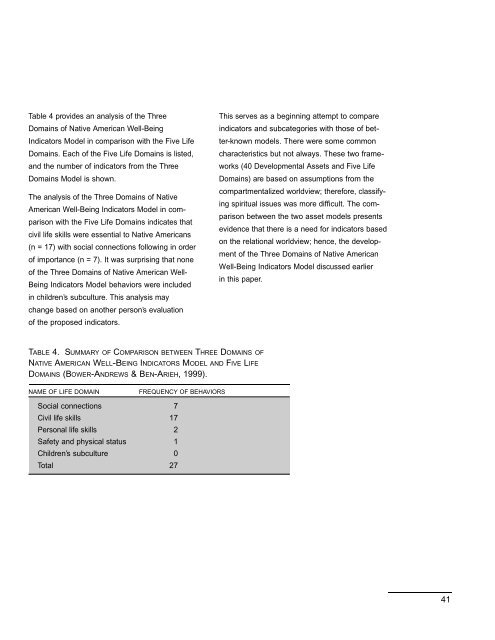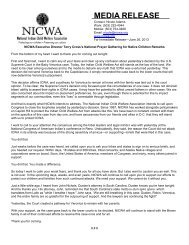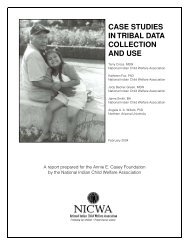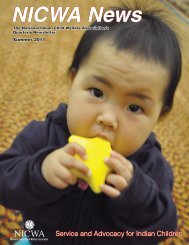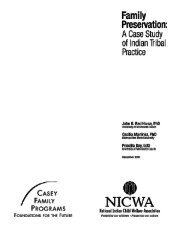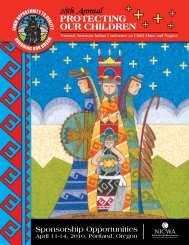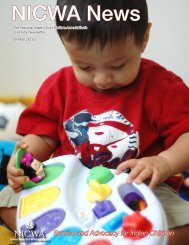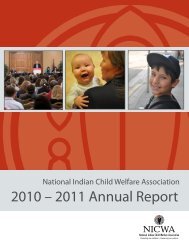Native American Children and Youth Well-Being Indicators
Native American Children and Youth Well-Being Indicators
Native American Children and Youth Well-Being Indicators
You also want an ePaper? Increase the reach of your titles
YUMPU automatically turns print PDFs into web optimized ePapers that Google loves.
Table 4 provides an analysis of the ThreeDomains of <strong>Native</strong> <strong>American</strong> <strong>Well</strong>-<strong>Being</strong><strong>Indicators</strong> Model in comparison with the Five LifeDomains. Each of the Five Life Domains is listed,<strong>and</strong> the number of indicators from the ThreeDomains Model is shown.The analysis of the Three Domains of <strong>Native</strong><strong>American</strong> <strong>Well</strong>-<strong>Being</strong> <strong>Indicators</strong> Model in comparisonwith the Five Life Domains indicates thatcivil life skills were essential to <strong>Native</strong> <strong>American</strong>s(n = 17) with social connections following in orderof importance (n = 7). It was surprising that noneof the Three Domains of <strong>Native</strong> <strong>American</strong> <strong>Well</strong>-<strong>Being</strong> <strong>Indicators</strong> Model behaviors were includedin children’s subculture. This analysis maychange based on another person’s evaluationof the proposed indicators.This serves as a beginning attempt to compareindicators <strong>and</strong> subcategories with those of better-knownmodels. There were some commoncharacteristics but not always. These two frameworks(40 Developmental Assets <strong>and</strong> Five LifeDomains) are based on assumptions from thecompartmentalized worldview; therefore, classifyingspiritual issues was more difficult. The comparisonbetween the two asset models presentsevidence that there is a need for indicators basedon the relational worldview; hence, the developmentof the Three Domains of <strong>Native</strong> <strong>American</strong><strong>Well</strong>-<strong>Being</strong> <strong>Indicators</strong> Model discussed earlierin this paper.TABLE 4. SUMMARY OF COMPARISON BETWEEN THREE DOMAINS OFNATIVE AMERICAN WELL-BEING INDICATORS MODEL AND FIVE LIFEDOMAINS (BOWER-ANDREWS & BEN-ARIEH, 1999).NAME OF LIFE DOMAINFREQUENCY OF BEHAVIORSSocial connections 7Civil life skills 17Personal life skills 2Safety <strong>and</strong> physical status 1<strong>Children</strong>’s subculture 0Total 2741


